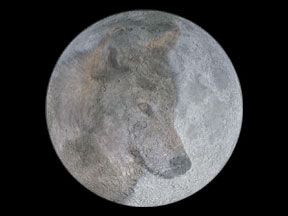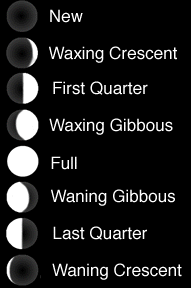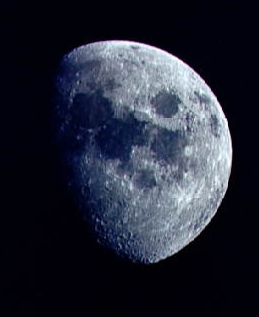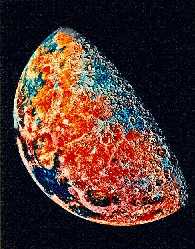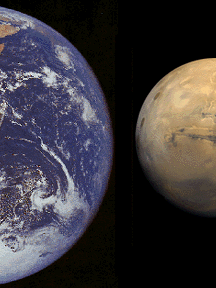Click on image for full size
Windows to the Universe original artwork by Randy Russell.
Related links:
The Many Names for the Full Moon
Sometimes, in the fall, you may hear people call a Full Moon the "Harvest Moon". That's because farmers can stay in their fields late, after sunset, harvesting their crops by the bright light of a Full Moon. Did you know that there are special names for the Full Moon during each month of the year?
The names for the Full Moon were made up by the Algonquian tribes of Native Americans. Most of the Algonquian people hunted and fished to get food, but some also grew crops. The names they had for the Moon are related to nature & the seasons, hunting & fishing, and farming. The Algonquian people lived all over the northern and eastern parts of North America. When settlers from Europe met up with them, some of the settlers started using most of the same names for the Full Moon.
The table below lists the names the Algonquian people used for the Full Moon during different months of the year.
| Month | Moon name | Why that name? |
| January | Wolf Moon | Hungry wolf packs howled at night |
| February | Snow Moon | Heaviest snowfalls in the middle of winter |
| March | Worm Moon | Start of spring, as earthworms (and the robins that eat them!) began to appear |
| April | Pink Moon | An early spring flower called "moss pink" started to bloom |
| May | Flower Moon | Many types of flowers bloom in May |
| June | Strawberry Moon | Strawberries were ready to be picked and eaten |
| July | Buck Moon | New antlers of buck deer, coated with velvety fur, began to form |
| August | Sturgeon Moon | Sturgeon, a large fish found in the Great Lakes, were easily caught at this time of year |
| September | Harvest Moon | Farmers could continue harvesting until after sunset by the light of the Harvest Moon |
| October | Hunter's Moon | Hunters tracked and killed prey by moonlight, stockpiling food for the coming winter |
| November | Beaver Moon | Time to set beaver traps before the swamps froze, to make sure of a supply of warm winter furs |
| December | Cold Moon | The cold of winter sets in |


